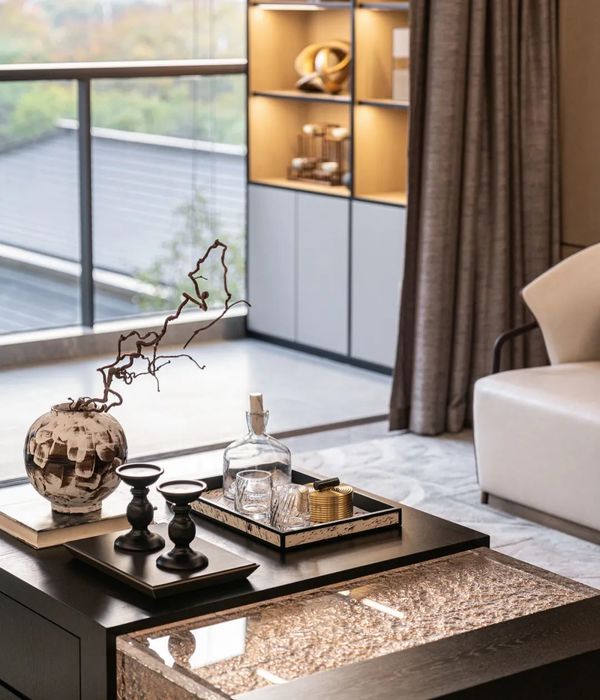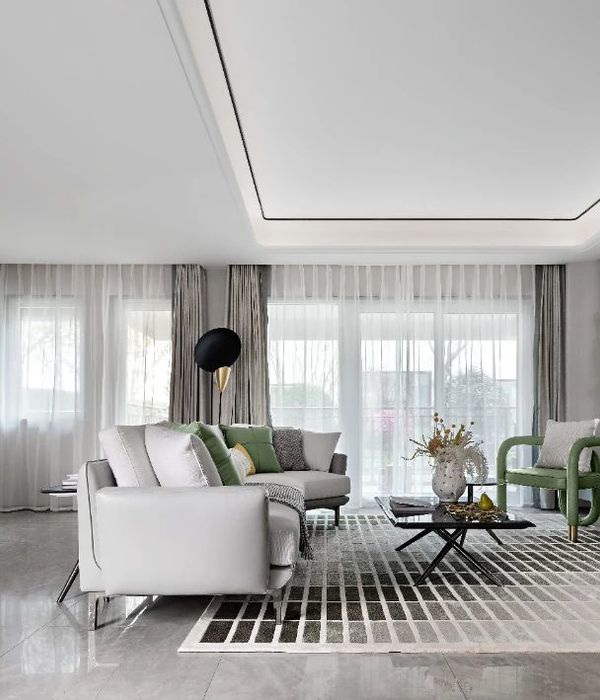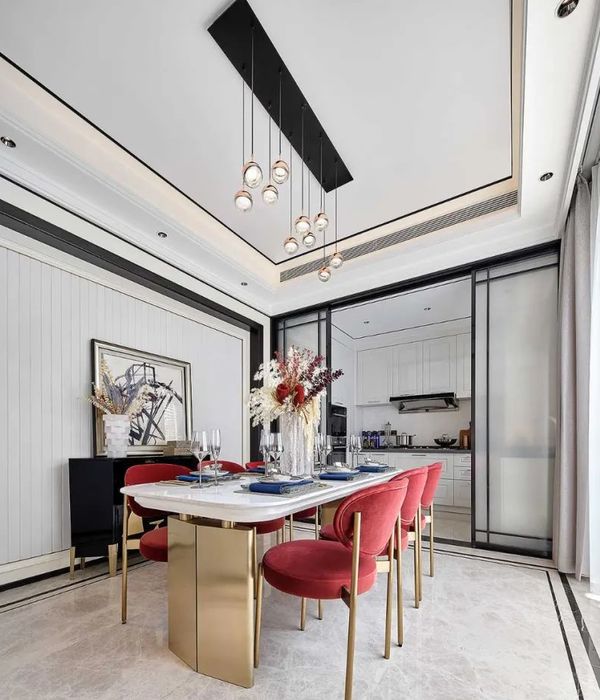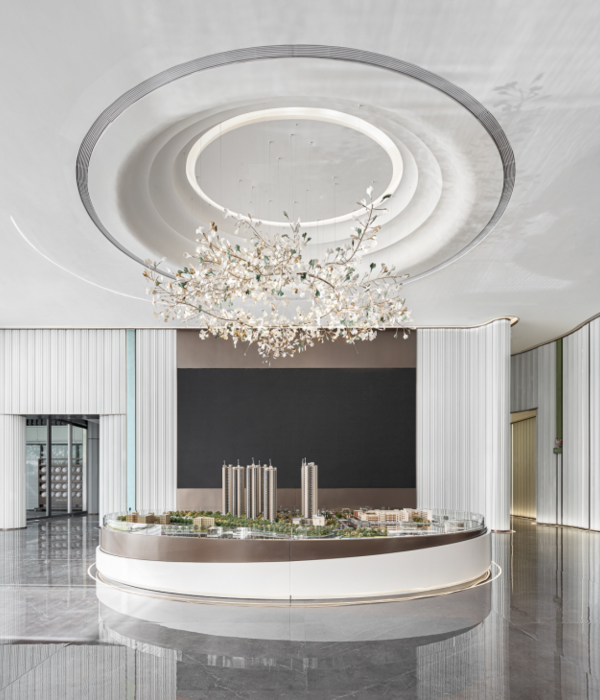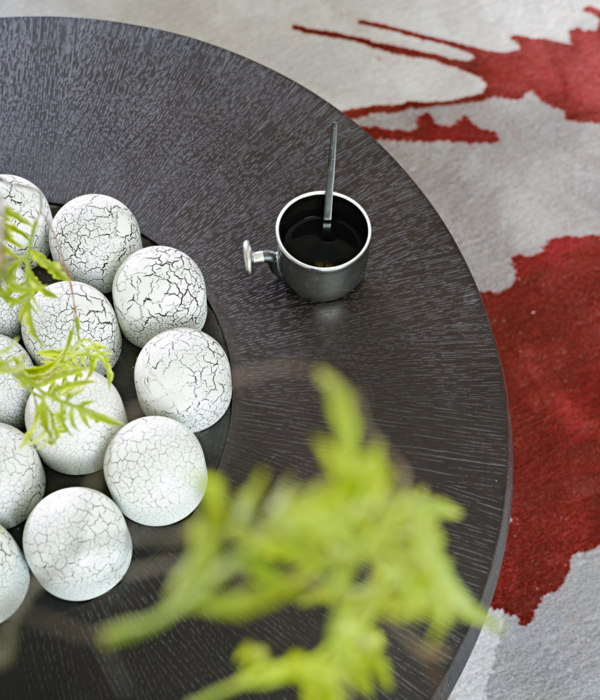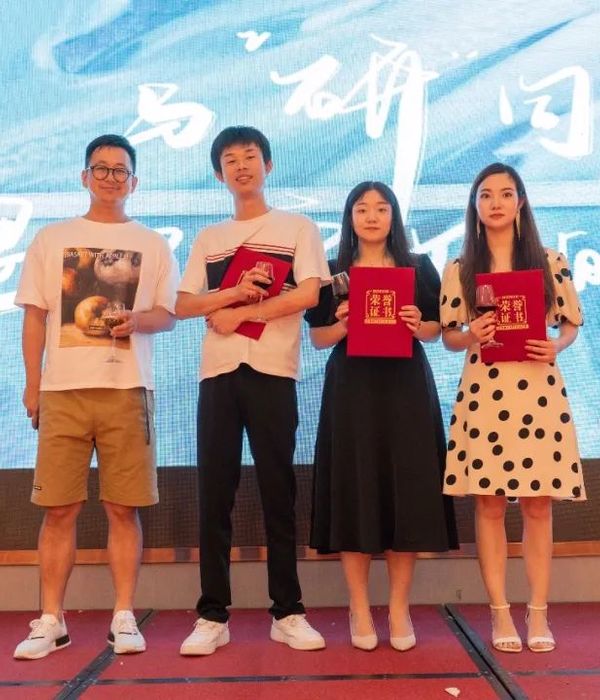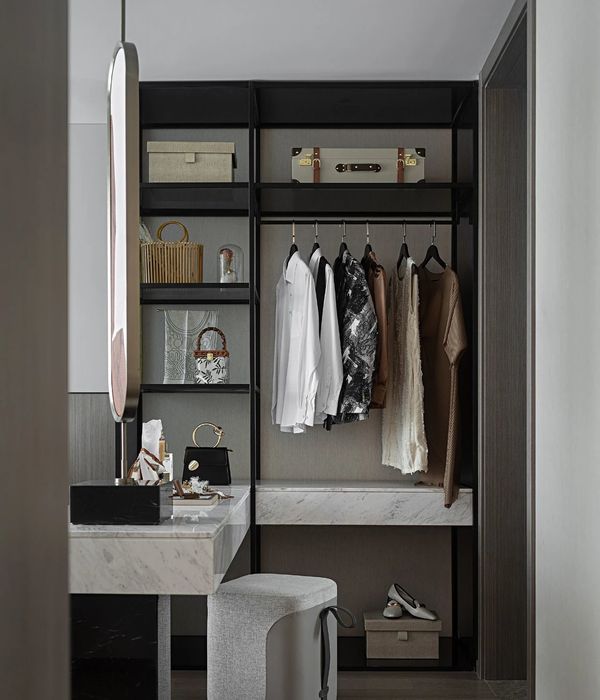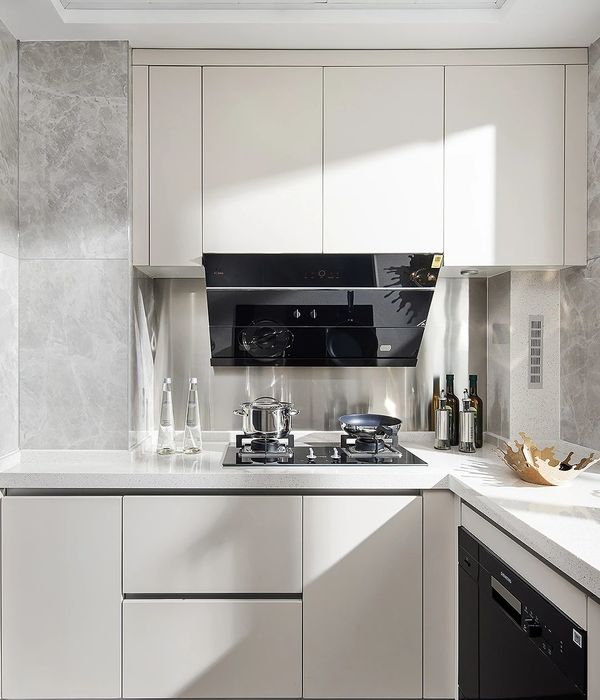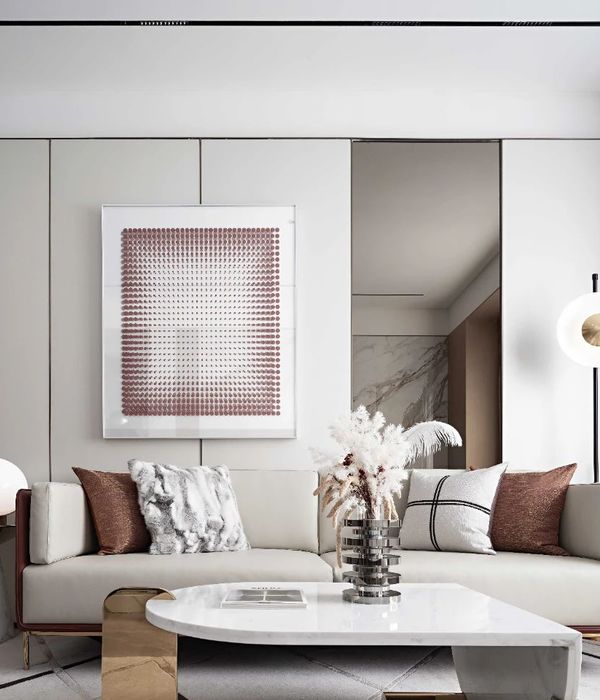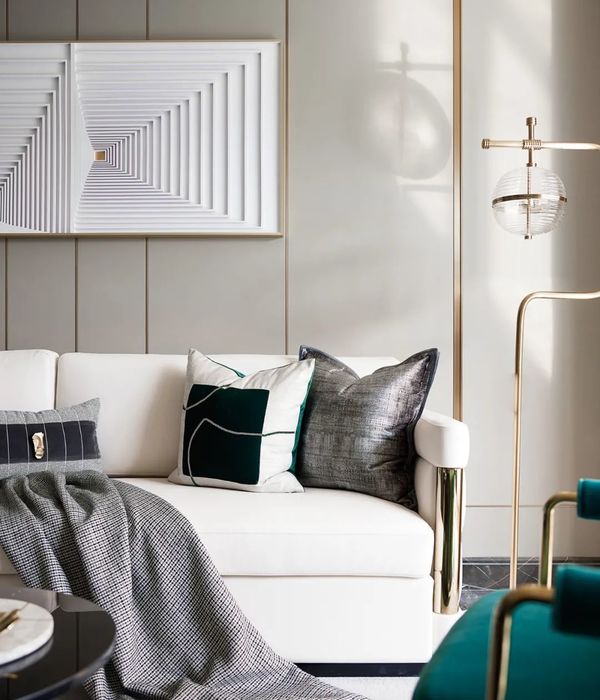FEDA是一个非营利组织,致力于为阿尔巴塞特的商业网络提供支持。考虑到公司业务的革新与服务的拓展,该组织决定将其分布在城市各处的工作点汇集在同一座建筑当中,这也是本项目的出发点所在。基于FEDA在城市中的声望,以及它为旗下公司提供的多种服务,项目从一开始便被寄予了成为城市地标的厚望。除此之外,新的建筑还将为一个介于市中心和Campollano工业区之间的新社区带来活力。
The Confederation of Employers of Albacete (FEDA) is a nonprofit organization representing and supporting the business network in the Region. Due to the evolution of its activities and growth of services, the organization raised the idea of bringing together in a sole building all the installations that were scattered throughout the city of Albacete. This idea was the seed of this project. From the beginning it became apparent that this initiative would be a milestone for Albacete, because FEDA has a high level of representation in the city, and because it offers many services to its companies. Besides, the new building aspires to endow new life to a new neighborhood which is being built between a hard industrial and services center, Campollano estate, and the city center.
▼建筑外观,exterior view
项目的设计以“消除限制”和“模糊化”为基本概念,意图将建筑体量覆盖在一层“面纱”之下,从而带来模糊和变化的感觉。建筑师希望建筑能够根据天气变化及使用者的行为形成不同层次的亮度和纹理。从外部看向内部时,建筑的表皮给人一种充满阴影的厚重感,同时又有一种遥远和不明确的感觉。这使得观察者难以获得稳定的参照,从而难以对建筑维持一个静态恒定的印象,而建筑本身则会根据使用者的不同视角作出不同的“回应”。
相反,第二层表皮应当被视为一个形状连续且尺度恒定的空间。类似地,内部立面凭借超出平常尺寸的巨大窗户重新整合了建筑,而外立面则以多孔的纹理在建筑与使用者之间建立了更紧密的联系。然而,两层立面的分离打乱了类似的空间感受,从内部望向立面系统的视角需要先消除建筑本身的界线。
We have designed this project from the idea of ’diffuse limits’ and ’blur’ architecture. Our intention was to cover the volume of the building with a veil capable of bluring it and making it change. We wanted the building to react to the variations of weather and the movement of users with different levels of brightness and textures. Looking at it from outside to inside, the skin would feel ’fleshy’, full of shades and thick. And at the same time it would appear as a distant and undefined object, so that the observer doesn’t have a stable reference, and could not keep a static link to the building and remember only an image. On the contrary the building would respond to the user in movement generating different glances and changing perceptions. In the opposite view, this second skin had to be perceived as a space with constant shape and without scale changes. Likely, the inner façade with the windows is the one able to defragment the building because the windows are very large compared to the human scale. This makes the user relate with the exterior skin, that has small scale holes and polymeric texture, in a closer way. But, again this feeling is distorted by the separation of the two layers. From inside, the perception of the façade system had to "fluff up" the limits of the building.
▼建筑体量覆盖在一层“面纱”之下,the volume of the building is covered with a veil
▼双层立面带来模糊和变化的感觉,the skin makes the building appear as a distant and undefined object
▼建筑立面根据天气变化及使用者的行为呈现不同层次的亮度和纹理,the building react to the variations of weather and the movement of users with different levels of brightness and textures
夜景,night view
该建筑融合了两个极端:清晰而有力的体量,以及模糊而轻薄的立面。立面系统带来的不稳定的纤弱质感平衡了厚重而单一的体量。这使得建筑整体呈现出一种向四周弥漫的奇妙氛围。在建筑层面上,功能、界线以及特征的凝聚是最为重要的一个方面,同样,建筑还应当为FEDA公司带来更多进步和发展的机会。建筑师与项目总监、工人以及使用者们共同绘制了一张功能地图,重新排布和组织了内部的工作流程,从而带来空间上的改变:原先的小隔间系统变为更加开放的楼层空间,这使得团队管理更加扁平化,促进了技术信息和文档系统的高效运行。
立面细部,detail of the facade
要实现新的布局,首先要解决两个问题:一是为每层楼赋予灵活的功能空间,二是要营造适于办公的氛围。对于第一个问题,建筑师提出了以极个别立柱为支撑的网状结构,将不同空间按照未来的功能需求重新分配;其次,建筑师通过置入将各种设备集于一体的天花和地板系统,使每个楼层成为完全自由的空间。对于第二个问题,FEDA从一开始就要求为使用者提供一个高舒适度的工作环境,而建筑师则希望打造一个“高度情感化”的工作空间,为使用者带来亲切的感受。小型植被整合了入口空间,楼层内的材料、温度、振动乃至自动门的开关速度,共同提示着使用者已经进入了一个沉静的空间,人们会在深入建筑的过程中自然而然地减少声响。这大概取决于建筑内极为明亮的光照,或是室内的吸声装置,空间的比例,抑或是所有这些因素共同作用的结果。
一层大厅,the lobby on the ground floor
▼交通空间贯穿了所有楼层,the access space extends from side to side of the floor between opposing facades
▼垂直的空间定义出建筑的“内部空隙”,the access space is the first part of ‘interior void’ that articulates the building
▼楼梯间具有十分克制的氛围,the circulation space has a very controlled atmosphere
交通空间贯穿了所有楼层,清晰地定义出了建筑的“内部空隙”,使用者可通过这一空间到达任何楼层,同时,信息站、展示区和集会空间也分布于此。该空间具有十分克制的氛围。具有沉重感的事物在这一空间内也会显得轻质。在照明和声音出现变化时,便意味着到达了室内和室外空间的交汇点。然而这一尺度并非以人为基准。建筑师试图将模糊的外部立面所产生的矛盾感引入到建筑的内核之中。
The access space extends from side to side of the floor between opposing facades. This is the first part of ‘interior void’ that articulates the building. From this space you can access all floors, and in it, information sites, exhibition and meeting places are located. We tried that this space had a very controlled atmosphere. You can feel how the perception of something heavy is inverted to the perception of lightweight. Where the lighting was different and the sound controlled, where always exists indoor-outdoor relationship. However the scale is not a person’s scale. We have tried to introduce the contradictions of the blurring exterior facade into the core of the building.
▼以极少数立柱支撑的网状布局为每层楼赋予了灵活的功能空间,the reticular structure with few columns provides withflexible and reprogrammable floors
▼可调节的分隔系统,adjustable partition system
▼集会空间,meeting area
▼巨大的落地窗带来充足采光和视野,the full-height window brings adequate natual light and views
最后,建筑师营造了一系列具有优质声音环境和适宜温度的办公空间。极为中性的布置让使用者能够随心放置自己的东西,使每个员工以一种高情感度的方式去打造属于自己的办公环境,从而形成一种更加有趣和真实的场景。高透明度的空间在有人进入的情况下会显得更具现实感。通过材料的运用、空间的控制,建筑为其使用者和参观者带来了更加感性的空间体验。建筑师始终将人性化作为构建办公场所的首要考虑因素。
And finally, we have designed open work spaces with high thermal and acoustic conditioning. We have built an extremely neutral area that invite users to bring their objects. We want the workers build their workplaces in highly emotional way. We believe that this will build a new landscape less anodyne and more interesting and real. A transparent landscape whose reality becomes evident to someone who enters the enclosure to get the collective support of the organization. This project works the relationship between the person and the building through the materials and conditioning, trying to improve the sensory and emotional perception of the workspace by its workers, members and visitors. This is a way of re-humanizing architecture and, as far as we’re concerned, this is an obligatory step to rethinking workplaces.
▼开放的办公空间,open work spaces
▼高度透明的空间体验,the transparent landscape
▼中性的布置让使用者能够随心放置自己的东西,the extremely neutral area that invite users to bring their objects
▼朝向足球场的窗景,a view to the ball field
▼停车场,parking area
夜景,night view
▼天台,rooftop
▼模型,model
▼轴测图,axon
▼场地平面图,site plan
▼首层平面图,ground floor plan
▼二层平面图,level 1 plan
▼三层平面图,level 2 plan
四层平面图,level 3 plan
▼屋顶平面图,roof plan
▼停车场平面图,car park plan
▼剖面图,section
▼立面分析图,facade diagram
立面结构细部,facade construction detail
Status – Completed
Colaborators – Mar Melgarejo Torralba and Ayara Mendo Pérez (Conceptual design), Rubén Perea Ibáñez; José Verdú Montesinos, Juan M. Sánchez, Oscar Carpio; Soledad Rodríguez Capuano (Model); José M. Noguera Pardo (3D and rendering)Use – Office, conferences, meeting, education.
Site – Albacete, España. 39º 00’ 25.49” N 1º 51’ 32.22” W
Area – 4.375 m2
Cost – 3.149.842 € (excluding V.A.T.)Photo Final – David Frutos
{{item.text_origin}}

